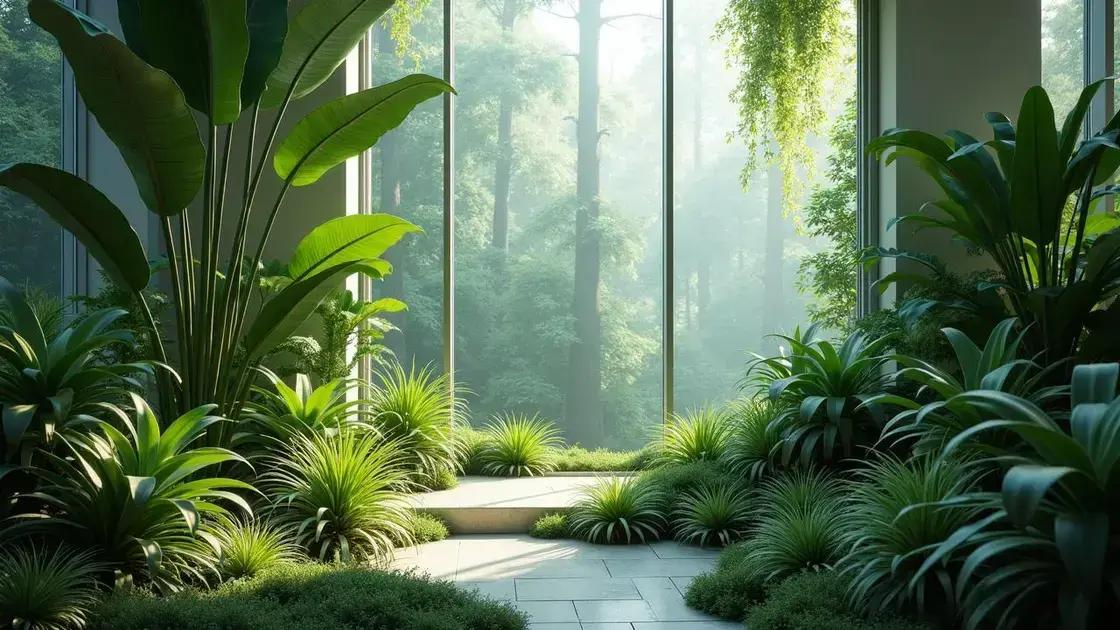How to Care Air Plants: 7 Essential Tips for Thriving Greenery
How to care air plants is the key question many plant enthusiasts ask. Air plants are captivating additions to any space. Understanding their specific needs is vital for thriving greenery. In this guide, we’ll explore how to provide the right light, water, and care for these unique plants.
Table of Contents
ToggleEssential light requirements for air plants
Essential light requirements for air plants are crucial for their health and growth. Air plants, or tillandsia, thrive best with the right light exposure, significantly affecting their vitality. Understanding these needs is the first step to ensuring that your air plants flourish.
Understanding light needs
Air plants prefer bright, indirect light. Here’s a breakdown of their light preferences:
- Bright, indirect sunlight: Ideal for most varieties of air plants.
- Filtered light: Some species can tolerate filtered or dappled sunlight.
- Avoid direct sunlight: Direct sunlight can scorch the leaves, causing damage.
Types of light sources
Here are some common light sources you can use for your air plants:
- Natural sunlight: Position your plants near a window with plenty of filtered light.
- Grow lights: Use full-spectrum LED grow lights to supplement inadequate natural light, especially during the winter.
- Fluorescent lighting: Regular fluorescent or compact fluorescent lights can also offer good options.
Signs of inadequate light
It’s essential to recognize when your air plants are not receiving enough light. Watch out for these signs:
- Color changes: Leaves may turn brown or lose color.
- Growth stunting: Slow or no growth can indicate insufficient light.
- Stretching: If your air plants start leaning towards the light source, they may need more exposure.
Tips for providing optimal light
Ensure your air plants thrive with these practical tips:
- Rotate your plants regularly for even light exposure.
- Gradually acclimate plants to brighter light conditions.
- Consider using timers with artificial lights for consistency.
By following these guidelines for how to care air plants, you can enjoy healthy, vibrant specimens. For more information on varieties and care, check out exploring indoor gardening techniques.
Top tips for watering air plants effectively

Top tips for watering air plants effectively are essential for their overall health. Air plants, or tillandsia, require a unique approach to hydration that differs from traditional houseplants. Knowing how to water them correctly will ensure your plants thrive.
Understanding watering methods
There are several effective ways to hydrate air plants. Here are the most popular methods:
- Soaking: Submerge plants in room temperature water for 20-30 minutes.
- Misting: Use a spray bottle to mist leaves lightly once every few days.
- Watering schedule: Adjust frequency based on humidity levels; dry climates may require more watering.
Signs your air plants need water
Look for these indicators to determine if your air plants are thirsty:
- Leaves appear dry and crispy.
- Plants have a dull or grayish color.
- Curling leaves may be observed when they lack moisture.
Best practices for watering
To ensure effective hydration, keep these practices in mind:
- Always use room temperature water to avoid shocking the plant.
- Ensure that water is drained completely after soaking to prevent rot.
- Water in the early morning or late afternoon to avoid evaporation.
Humidity and its role in watering
Humidity plays a critical role in the watering needs of air plants:
- In dryer conditions, increase watering frequency.
- In high humidity areas, reduce soaking as they may absorb sufficient moisture from the air.
- Consider using a humidity meter to track moisture levels in your environment.
By following these simple yet powerful tips for how to care air plants, you can maintain their beauty and health. For further insights, explore exploring indoor gardening techniques.
Best air plant varieties and their unique care needs
Best air plant varieties and their unique care needs can significantly enhance your indoor gardening experience. Understanding the specific requirements of different air plant species ensures their healthy growth and vibrancy. Each variety has its unique characteristics and care tips to thrive in your home.
Popular air plant varieties
Here are some of the most sought-after air plants:
- Tillandsia usneoides: Also known as Spanish moss, this variety prefers bright, indirect light and high humidity.
- Tillandsia ionantha: Known for its vibrant flowers, this species loves bright light and occasional soaking.
- Tillandsia xerografica: Characterized by its large, rosette shape, this variety enjoys moderate light and should be misted regularly.
Unique care requirements for each variety
Each air plant species has distinct care needs. Here’s how to care for some popular types:
- Tillandsia usneoides: Regular misting or soaking once a week is ideal; provide well-filtered light.
- Tillandsia ionantha: Water every 5-7 days; ensure it dries well after soaking.
- Tillandsia xerografica: Mist every 3-4 days and keep in a space with moderate indirect light.
Signs of healthy vs. unhealthy air plants
Identifying the health of your air plants is crucial:
- Healthy signs: Vibrant color, firm texture, and consistent growth.
- Unhealthy signs: Brown, crispy leaves, curling or wilting foliage.
By learning about the best air plant varieties and understanding their unique care needs, you can create a thriving botanical haven. For more guidance on these incredible plants, check out exploring indoor gardening techniques.
In conclusion
Caring for air plants can be a rewarding experience. By understanding their unique light, watering, and care requirements, you can ensure that your plants thrive. Remember the best air plant varieties and their specific needs for optimal growth. Additionally, as you explore the fascinating world of these remarkable plants, consider looking for tips on enhancing your indoor garden. With the right knowledge, your indoor garden can flourish beautifully.

